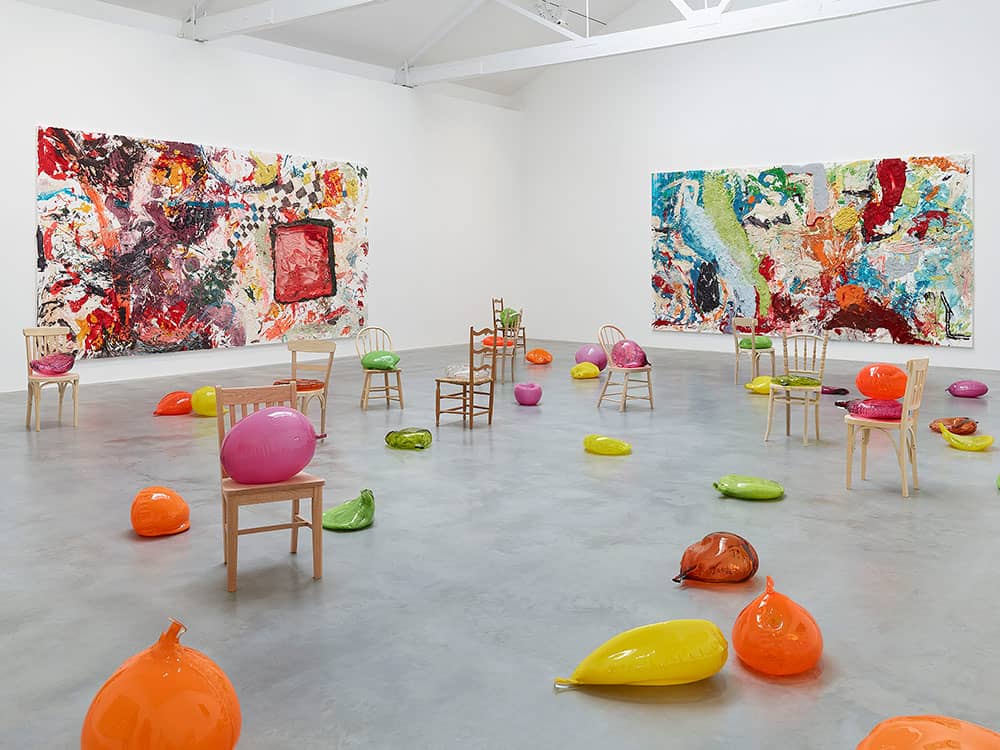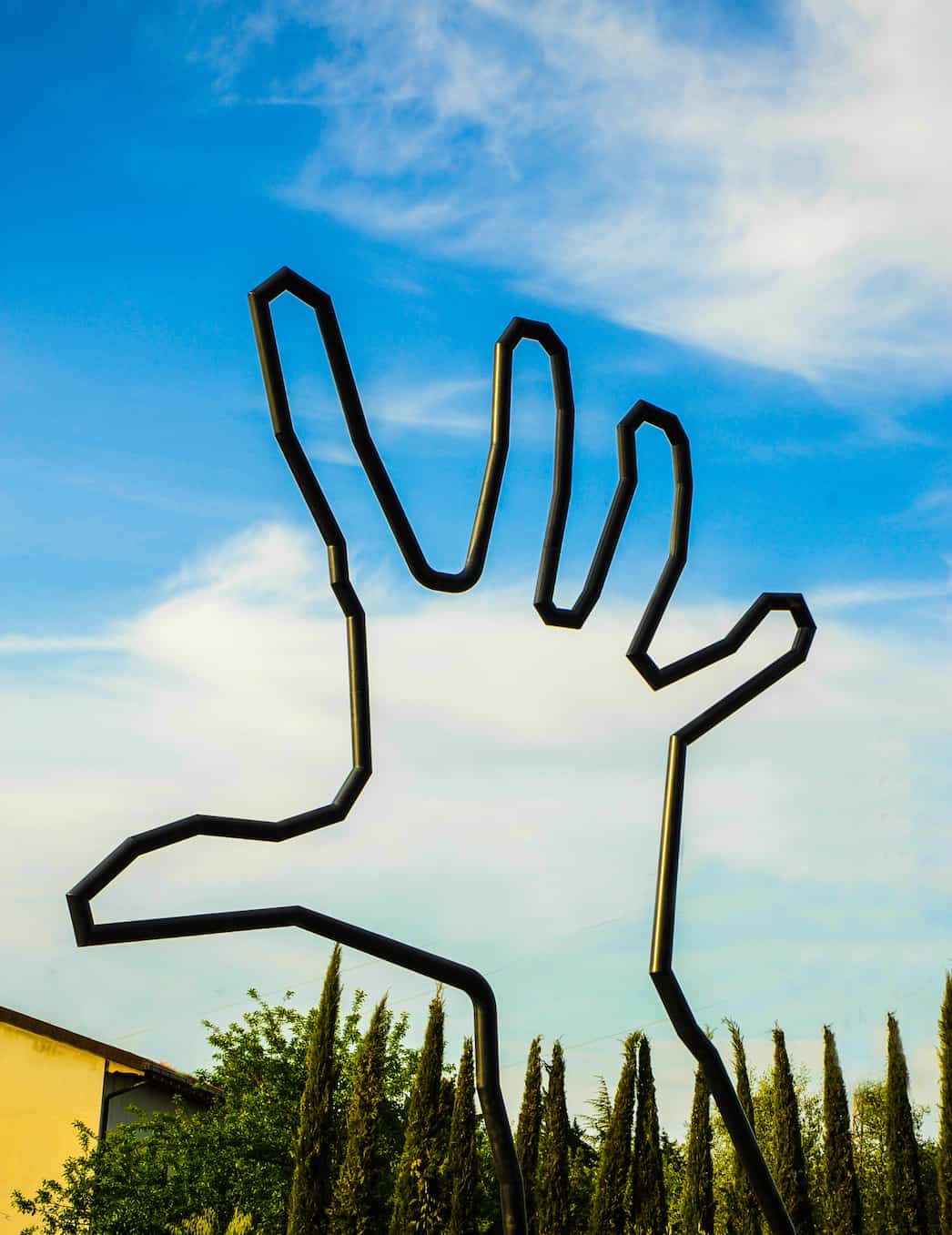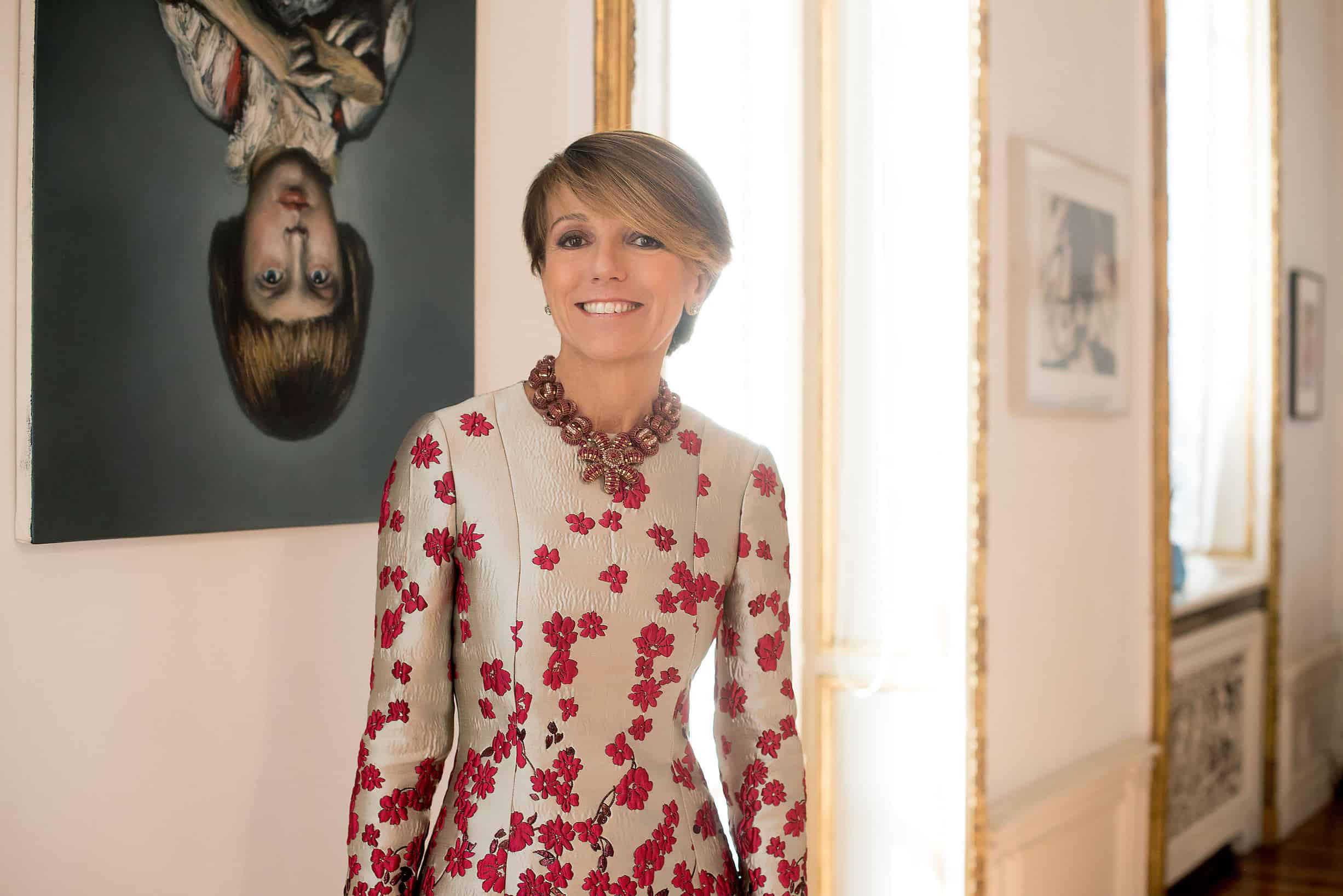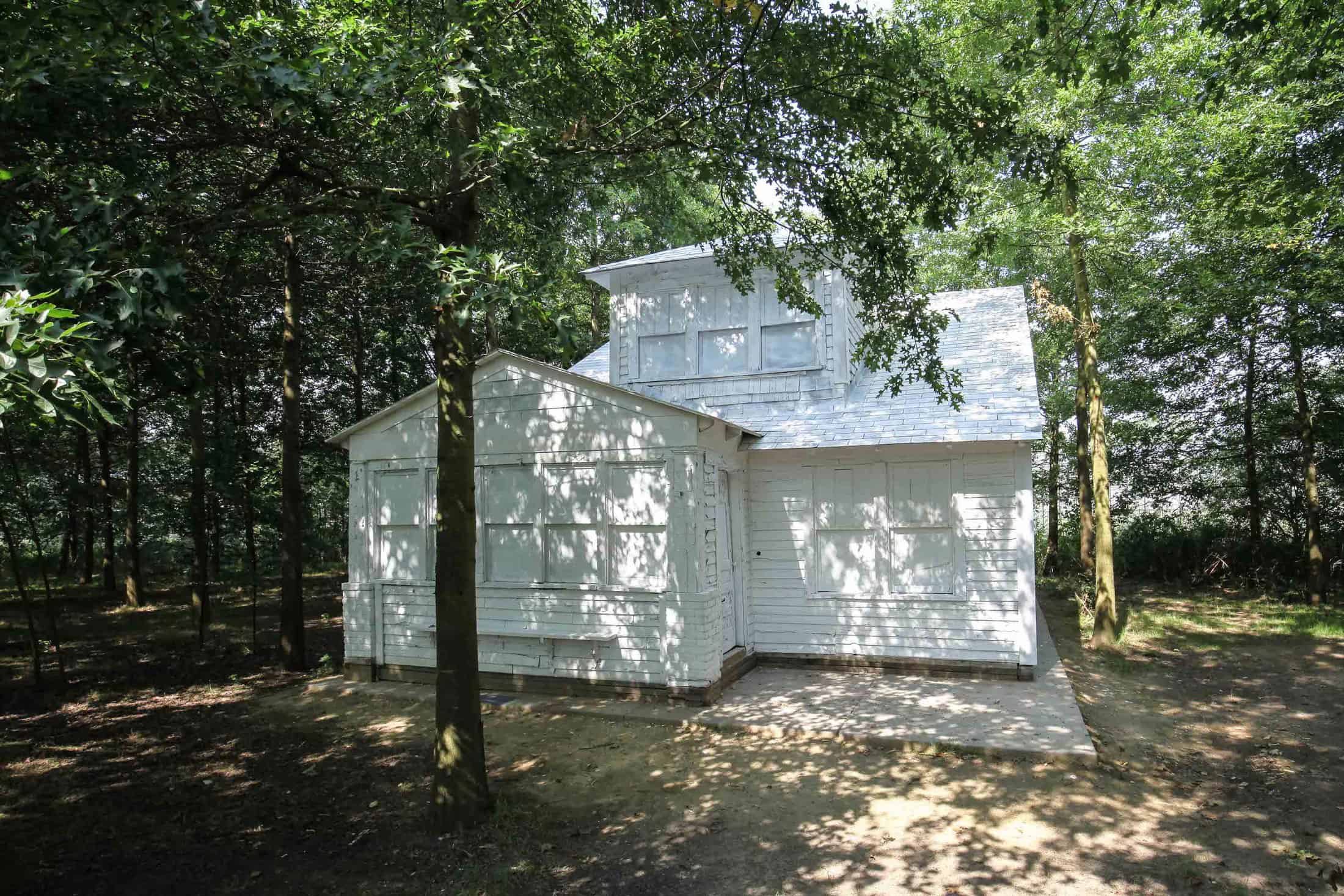What drives collectors to spend large sums of money on contemporary art? Do they treat art as yet another form of investment or is it a lifelong passion? There is a number of reasons why collecting art is becoming more and more popular. According to an Artsy report, the vast majority of collectors buy art to decorate their homes and as a source of inspiration. Supporting the arts and artists, preserving the history, and experiencing the thrill of looking for a new acquisition are also among the main motives. However, there is another top reason: collecting is all about joining and building a community that boasts a really strong bond.
It is not uncommon for collectors to meet up with the authors of the works they bought, and create meaningful connections with artists. Relations between collectors and artists go beyond typical trade relationships. More often than not, they resemble a one-of-a-kind kinship whose characteristics are defined by the individual manner of collecting and the way buying art gradually turns into a creative collaboration with artists and allocating resources to special projects and commissions. When building close-knit communities, collectors and artists set common goals, share similar expectations, and engage in interactions leading to outstanding results.
Artist as a collector
Damien Hirst is well-known for preserving animals in formaldehyde and creating extravagant works of art. His pieces sell for millions and tend to break auctions records every now and then. The most recognisable representative of Young British Artists has been also supporting fellow artists with his vast financial resources. Hirst has been vigorously collecting art since winning the Turner Prize in 1995. Known as “murderme collection,” his personal accumulation of exceptional artworks spans several decades and boats creations by many art world stars, including Banksy, Tracey Emin, Jeff Koons, Francis Bacon, and Andy Warhol, to name just a few.
Taking on a role of a collector and patron, while still being a prolific artist, has opened up a range of possibilities for Hirst. Many artists whose works are in his collection belong to the same social network and often hang out together. Since the late 1990s, the author of the world-famous shark – gracefully entitled The Physical Impossibility of Death in the Mind of Someone Living – has become a pivotal figure and even a role-model for a number of young collectors as well as up-and-coming artists.

Damien Hirst’s Newport Street Gallery, London, Photo Courtesy Newport Street Gallery
Reportedly the UK’s richest living artist has exceeded his fellow artists’ expectations when he decided to set up an exhibition venue. In 2015, he opened Newport Street Gallery — a London-based contemporary art gallery, which has been dedicated to presenting exhibitions of works from his personal “murderme” collection and has served as a meeting point for various art world players. The shows vary between solo and group projects and the entrance to the gallery is always free. This initiative is the realisation of Hirst’s long-term ambition to share his collection with the public.

Dan Colen, Sweet Library, Installation view at Newport Street Gallery, 2018, Photo by Prudence Cumings Associates. © Dan Colen and Victor Mara Ltd.
Working hand in hand
Geert Verbeke is the driving force behind the Verbeke Foundation, one of the largest private initiatives for modern and contemporary art in Europe. His collection includes over two thousand works by Belgian and international artists and covers more than 100 years of art history.
‘What I like the most is working closely with artists and commissioning their projects,’ says the collector. In this case, ‘working closely’ couldn’t be more literal as Geert Verbeke’s input doesn’t boil down to providing financial and operational capacity. He often works hand in hand with the artists, moving large elements of sculptures (he used to run a transport agency), painting their components, and putting various parts of installations together. While working on new projects, artists often stay at his place, spend time and share meals with the Verbeke family. This unorthodox approach situates the Belgian collector somewhere between a buyer, maker, artist’s assistant and even some sort of an artist too.
One of his first major commissions was Jan Fabre’s “I spit on my grave (hommage to Boris Vian)”. The work comprises over 360 granite tombstones with names of insects engraved on some of them. The dates on the stones refer to birth and death dates of artists, academics and philosophers whom Jan Fabre admires. In 2005, the collector and the artist joined their forces to produce three different works. The first one is on permanent display at the foundation, the second was exhibited at the Venice Biennale in 2007, the third at the Louvre in 2008 and was later bought by Museum of Old and New Art in Tasmania. Since then Geert Verbeke has commissioned many large-scale works, varying in size (from big to monumental) and materials used. They include Jason van der Woude’s house-like structure made out of hundreds of old windows, herman de vries’ installation created with thousands of cow bones and flowers, or Ryan Mendoza’s The White House, an abandoned house that was transported from Detroit to Europe and showed at Art Rotterdam in 2016, and later moved to the foundation’s grounds just outside Antwerp.
Geert Verbeke standing on Martin uit den Bogaard’s Cow (1990), The Verbeke Foundation. Photo by Marek Wolynski, Courtesy Verbeke Foundation
Edgard de Souza, Untitled, Photo Rossana Magri, Courtesy Instituto Inhotim
Growing artworks
What happens when collectors of contemporary art live in Tuscany or southern France? The artworks naturally wander outdoors to enjoy the sun and natural surroundings as much as their owners do. There is a substantial group of collectors who committed themselves to collecting only site-specific works which are irreversibly bound up with particular locations. To exhibit and store their art collections, they created sculpture parks whose expansive grounds elicit pure enjoyment. The multi-sensory and contemplative experience of visiting one of these places might only be interrupted by the crunch of the forest floor underfoot or wild animals staring at contemporary art in amazement.
In 2006, entrepreneur Bernardo Paz conceived Inhotim, a 140-hectare area located amid remnants of the Atlantic rainforest and the Brazilian savanna. The site includes botanical garden and an extensive collection of rare tropical species and contemporary art. With its colourful picture-perfect appearance, on-site hotels, restaurants, and golf carts to roam the grounds, Inhotim resembles a holiday resort more than a typical art centre. Bernardo Paz worked closely with many artists to integrate the luxuriance of the flora with site-specific installations and works bought at auctions. His collection comprises nearly 1,500 works, including Doug Aitken, Chris Burden, Edward Krasiński, and Thomas Hirschhorn.
Inhotim, Photo Rossana Magri, Courtesy Instituto Inhotim
Edgard de Souza, Untitled, Photo Rossana Magri, Courtesy Instituto Inhotim
While the Brazilian entrepreneur concentred his energy on setting up a rather remote art destination, Angela and Massimo Lauro created an easily accessible retreat on the green border between Umbria and Tuscany. The Neapolitan collectors worked with dozens of artists to build a nature-centred art collection scattered around the grassy environs surrounding their villa. Upon entering the grounds, visitors are greeted by Piotr Uklański’s gigantic metal hand sticking out of the lawn and dozens of site-specific works and special commissions (created by Ugo Rondinone, Takashi Murakami, Martin Creed, or Maurizio Cattelan, to name just a few) await to be experienced in refreshingly novel ways under the Mediterranean sun. Aiming at developing its vocation as an art community and international centre for contemporary art, Giardino dei Lauri also houses performances and organises events in its stunning outdoor spaces.

Piotr Uklański, Untitled (The Thing), Giardino dei Lauri, Photo Courtesy Giardino dei Lauri
At the forefront of innovation
With virtual reality developing at the speed of light, artists and collectors often join forces to build bridges between art and technology. One of these figures is Patrizia Sandretto Re Rebaudengo who entered her personal path as a collector upon stepping into Anish Kapoor’s studio in 1992. She founded Fondazione Sandretto Re Rebaudengo three years later and opened its current premises in Turin in 2002. Her affection for astonishing contemporary art, to name the suicidal squirrel of Catalan’s ‘Bidibidobidiboo’ in particular, is world-famous. Advocating for the extraordinary, she personally champions adventurous projects that involve cutting-edge technologies and supports the production of works by artists just entering the fray.

Patrizia Sandretto Re Rebaudengo, Photo Stefano Sciuto, Courtesy Fondazione Sandretto Re Rebaudengo.
Maurizio Cattelan, Bidibidobidiboo, 1996, Photo Courtesy Fondazione Sandretto Re Rebaudengo.
‘I understand that advanced art needs a special kind of support, one that is risk-taking, that is not afraid to bet on the future, even if you don’t know the outcome,’ says the collector. Consequently, an indispensable part of Fondazione’s strategy is to commission and produce art that is ahead of its time. Patrizia Sandretto Re Rebaudengo has centred her activities around works that defy traditional collecting habits, because they constantly evolve and could be described as infinite—ultimately being very different from the idea of an object that you own. One of the fruits of her partnership with artists is Ian Cheng’s trilogy, Emissaries (2015-2017), a series of three live simulations that explore Artificial Intelligence and its relationship with the development of human consciousness. Emissaries is definitely one of the most complex and technologically advanced works that was produced in recent years.
Widely recognised as the Italian grande dame of contemporary collecting, Patrizia Sandretto Re Rebaudengo has also collaborated on groundbreaking projects with a range of established artists by personally supporting the production of major works such as Zidane. A 21st Century Portrait by Douglas Gordon and Philippe Parreno, Gravesend/Unexploded by Steve McQueen, or Cabaret Crusades. The Path to Cairo by Wael Shawky.

Installation view of Ian Cheng’s Emissaries, curated by Hans Ulrich Obrist, Fondazione Sandretto Re Rebaudengo, Turin, Courtesy Fondazione Sandretto Re Rebaudengo
Towards a common goal
Many collectors eagerly befriend artists and create generous development opportunities, including art residencies and specially commissioned projects, that strengthen relationship bonds and interactions. Other collectors prefer to step back and enjoy the role of discreet buyers. Obviously, the first approach is much more glamorous and attract attention of wider audiences. The second manner of collecting, although more conventional and less alluring, is as valid and essential for the efficient operations of the art world.
What matters the most to any community is a common goal though. No matter how complicated a relationship between an artist and collector may be, the relentless efforts to celebrate creativity in all its complexity and diversity come first. Shaping that sort of an oasis where artists can experiment and expand their horizons, while collectors find satisfaction in supporting their projects, is not only beneficial to all parties involved but also, and above all, crucial to the genuine community making.













